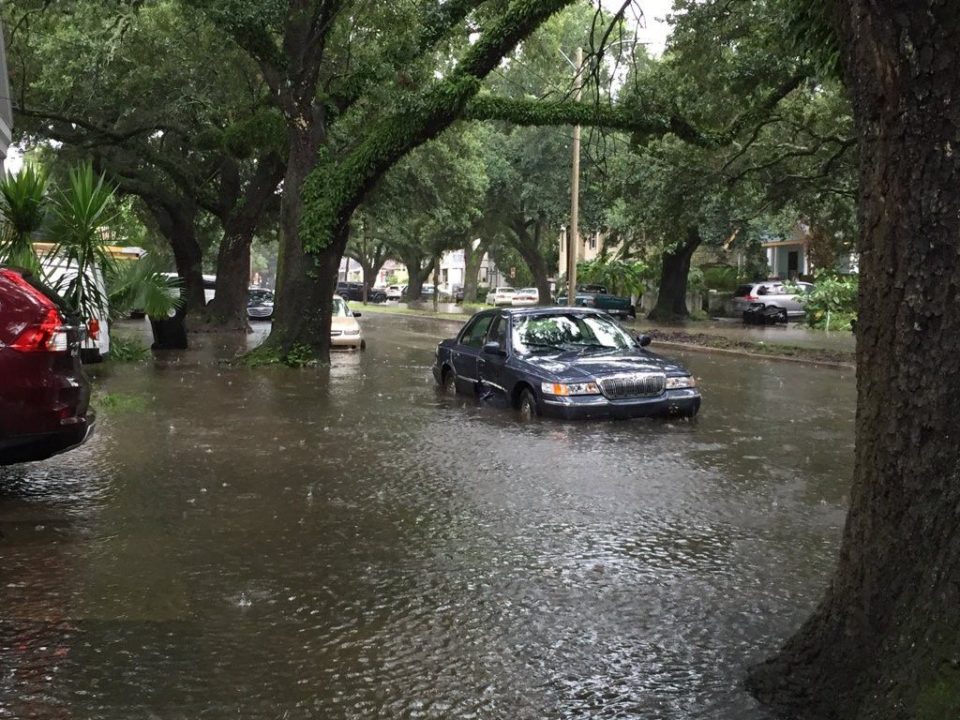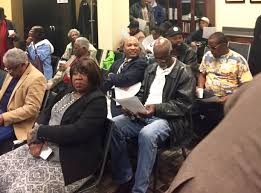By C.C. Campbell-Rock
The battle to keep the New Orleans Sewerage & Water Board from shutting off the water of people who have not paid their bills for a variety of reasons, including flooding damages, overbilling, estimated bills, and other complications stemming from the agency that is tasked with keeping New Orleans dry.
Community groups including The New Orleans Peoples Assembly, Justice & Beyond and others have filed lawsuits, held candlelight vigils, and met with city officials and Sewerage & Water Board leaders to demand payback for several flooding incidents last summer, most notable the August 5th flood which dumped nearly a foot of water in parts of New Orleans, due to failing pumps and clogged drains, and to demand a stop to pending water shut-offs of 17,000 delinquent accounts by Sewerage and Water Board.
According to Malcolm Suber, a community organizer with the New Orleans Peoples Assembly, a lawsuit is being filed today to get reparations for the victims of the August 2017 flood. The New Orleans Peoples Assembly has identified plaintiffs for the legal action. An earlier lawsuit filed by the group was dismissed.
Justice & Beyond, a broad-based civil rights coalition, held an Ecumenical Candlelight Vigil on August 1. The event, held outside of the S&WB headquarters, was attended by community members and at least 12 ministers.
The group also met with Sewerage & Water Board Interim Director Jade Brown-Russell. “If you had a dispute over your bill, you must have filed a complaint by June 22. But that’s changed. You can now dispute any bill,” says Pat Bryant, co-chair of Justice & Beyond. “The S&WB also extended more than 50% of bills issued in January and February of this year.” The group is demanding an end to planned water shutoffs by the S&WB.
“Shutoffs are a last resort. The owners of delinquent accounts will receive a letter giving those 14 days to pay in full or arrange a payment plan. A payment plan requires 25 percent down immediately. The remaining balance is then scheduled across future bills for six to nine months,” according to an S&WB press release.
“The first step of the process will target about 17,000 delinquent accounts that are not in dispute and have owed more than $50 for over 60 days – only about 12 percent of total customers – with the goal of recouping more than $21.8 million in lost revenue.

“To delay the reinstitution of collections any longer would put this agency at great financial risk, jeopardizing its mission to drain storm water, treat and remove wastewater and provide safe drinking water for the City. The S&WB has invested $82 million in emergency repairs to its drainage system since the flood last year, which has strained the budget. In order for the agency to stay in good standing with our bond covenants, it must replenish those depleted funds.”
“We have never said we’d shutoff 17,000 at one time,” explains D’Seante Parks, S&WB Press Secretary. “Our priority is people. “The majority of delinquent accounts are industrial and corporate accounts,” she explains, “not necessarily regular customers.”
Parks says the agency has a program in place to assist seniors, people with disabilities, and low-income residents. Information on the Water Help program can be found by contacting the agency at 504.585.2298.
‘We have a team that handles water shutoffs and 13 people to check meters. The agency is hiring a lot more meter readers. “We’re moving away from bill estimating,” she says responding to questions about customer complaints overbilling due to faulty estimates. .
Parks also says the period to file claims for damages incurred during the August 2017 flood has been extended.
The S&WB system has been in place since 1903 and the aging system has had a myriad of problems, but there is still no guaranteed pumping system that protects the city from flooding during heavy rainstorms and hurricanes. For a city that is below sea-level, residents live in constant fear of torrential flooding in their neighborhoods.
Heavy rainstorms in July and August 2017 brought back floods of memories of the worst man-made disaster in U.S. History. On August 29, 2005, Hurricane Katrina came to New Orleans and the levees broke, pumps failed, and 14-20 feet of water took the lives of at least 1500 people, and turned the city into Lake New Orleans. It took a full month for the water to subside.
On August 5, 2017, the trauma of Katrina revisited the city. Failing pumps, clogged drains, and water in the streets caused an outcry that is still being heard. Residents are continuing to demand a better pumping system and protection from both hurricanes and heavy rains.
“They (city leaders and S&WB) are not going to do any more than we force them to do,” Pat Bryant says.
Clearly, city officials can’t stop hurricanes or rainstorms but they have a duty to protect the city from excessive flooding.

